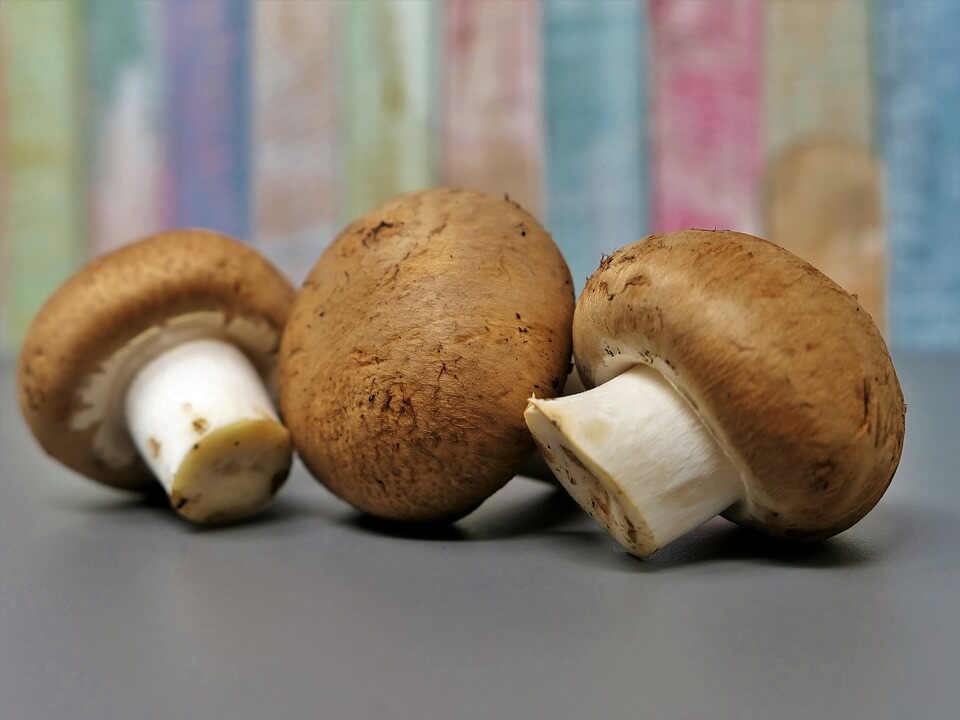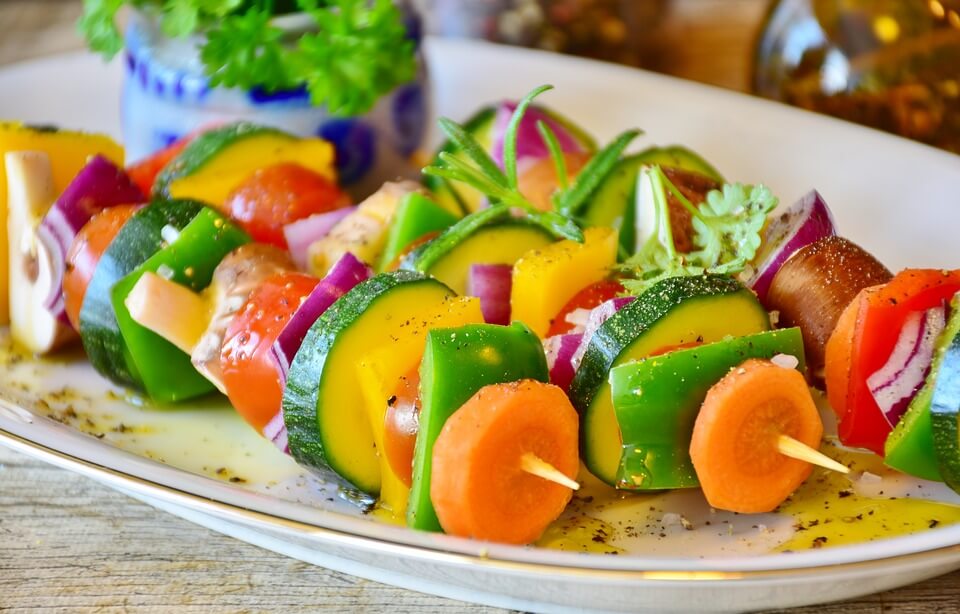We don’t know for certain, but it’s been postulated that perhaps there’s a critical period after a breast cancer diagnosis when we should move quickly to change the environment of the cancer patient.
This final post in my three-part series on breast cancer survivorship lifestyle guidelines is a summary of diet and nutrition guidelines with a nod to functional-foods, supplements, and complementary and alternative medicine (CAM) from the October 2017 Academy of Nutrition and Dietetics Food and Nutrition Conference & Exhibition professional session titled: “Cancer Survivorship Guidelines: Time for Action”.
Presenter Wendy Demark-Wahnefried, PhD, RD, associate professor of nutrition sciences at University of Alabama Birmingham and associate director for cancer prevention and control at the UAB Comprehensive Cancer Center expertly covered the following:
- Dietary patterns associated with improved outcomes in cancer survivors.
- Associations between alcohol consumption and recurrence, as well as primary risk with regard to breast cancer.
- Identifying the current stance on functional-foods, supplements and CAM (complementary and alternative medicine.)
Dr. Demark-Wahnefried highlighted these guidelines and how they pertain to ALL cancers; I’m sharing only the breast cancer messages.

ACS (American Cancer Society) NUTRITION GUIDELINES FOR SURVIVORS
Dr. Demark-Wahnefried acknowledged that current ACS dietary guidelines support healthy weight control – a consistent message echoed throughout the physical activity and weight portion of this session; Part I and Part II of this three part series.
Choose foods and beverages in amounts that support/maintain a healthy weight.
- Minimize sugar or empty calorie foods, choose nutrient-dense foods that support the diet.
Limit processed and red meat
- Yet still obtain adequate protein
Eat at least 2.5 cups of fruits and vegetables per day
Choose whole vs. refined grains
If you drink alcohol; less than or equal to 1 drink/day for women, less than or equal to 2 drinks per day for men. (1, 2)
These guidelines are based on World Cancer Research Fund and American Institute for Cancer Research recommendations that are evaluated on a continual basis. The ACS uses them as a foundation, adding on prevalent comorbidities that we may see in the United States.
The current macronutrient distribution recommendation (how you choose to distribute calories/food choices throughout the day) looks like this:
- 45-65% carbohydrates, the majority of which should come from complex sources like whole grains and fruits and vegetables
- 20-35% fat from monounsaturated fat and omega-3 fatty acid sources
- 0.8 g/kg protein (although recent data suggest 1.2 – 2.0 g/kg to reduce risk of sarcopenia in survivors)
Regarding protein, simply supplementing with dietary protein isn’t enough to maintain lean muscle mass, it must be combined with a resistance training exercise program as part of a multi-component intervention.

MEAT CONSUMPTION
On October 16, 2015 the International Agency of Research on Cancer declared, “Red meat is a carcinogen.” (3)
Especially if you’re a heavy meat eater, this is an alarming statement, yet the first consideration we need to take is differentiating between processed meat and red meat.
Processed meat is considered a Group 1 carcinogen, which means CAUSES CANCER.
One of the largest studies to support this recommendation and classification is from a pooled analysis of 37,698 men from the Health Professionals Follow-Up Study, and 83,644 women from the Nurses’ Health Study.
In the literature, we see a dose response as intake of red meat increases. The overall hazards ratio shows a 10% increased risk of dying of cancer for every serving of red meat, and a 16% increased risk for processed meat. However, if we substitute fish, poultry, nuts, legumes and low-fat dairy for red meat, we see a 7%-19% lower mortality risk. (4)
The American Institute for Cancer Research recommends limiting red meat to no more than 18 ounces per week. Three ounces of meat is a single serving, so you can see how eating as little as three ounces daily would easily put someone beyond the recommended amount.
Bottom line, the less red and processed meat consumed, the better.
DIETARY PATTERNS
Dr. Demark-Wahnefried shared data from three large observational breast cancer cohort studies, two done in the United States and one conducted in Europe which investigated overall dietary patterns of breast cancer patients following the Prudent Diet versus the Western Diet.
Dr. Demark-Wahnefried pointed some critical differences in the outcomes of these studies; the European study looked at post-menopausal women, the U.S. studies looked at ALL breast cancers, which could account for differences in diet and risk factors.
The Prudent Diet is a plant-based diet, heavy in whole grains, fruits and vegetables, with little amounts of meat and refined carbohydrates and sugars.
The Western Diet includes more sugar and refined grains, as well as fast food, and is reflective of the “Standard American Diet.”
Many breast cancer patients ask, “If I follow a different diet is it going to change my breast cancer?” The data in the U.S. studies suggest not, that it doesn’t matter what type of diet one follows as far as cancer-related mortality is concerned.
However, for all-cause mortality, we DO see a difference.
The Prudent Diet reduces all-cause mortality by 50%, while the Western Diet increases all-cause mortality by more than two-fold.
We’ve long known that a good diet is good for reducing/eliminating heart disease, and for breast cancer survivors, heart disease is one of the leading causes of death. (5)
The European study didn’t show protection with the Prudent Diet, but we do see an increased risk factor for cancer-related mortality with the Western diet (remember, the European diet was done on post-menopausal women.)
Takeaway: it’s important to follow a plant-based diet more in line with the Prudent Diet vs the Western Diet.
DIET QUALITY
Various studies looked at diet quality and all different types of cancer, showing that with an increase in diet quality we see protection from overall mortality. (5)
DIET AND BREAST CANCER RECURRENCE
Two randomized control trials looking at cancer recurrence were highlighted.
The WHEL (Women’s Healthy Eating and Living) study, done in over 3,000 breast cancer patients had an intervention arm of 5 vegetable servings, 3 fruit servings, 30 grams of fiber, and 15-20% intake from fat (low fat diet).
There was good follow up of the subjects for 10 years, with disappointing outcomes showing breast cancer recurrence, breast cancer deaths, and total deaths equivalent between the control and the intervention arms.
These outcomes were also in opposition to WINS (Women’s Intervention Nutrition Study), which didn’t have such a high fruit and vegetable component, but did have a low-fat (15%) diet. For all patients in the WIN study, there was a significant decrease in breast cancer events, and it was particularly notable in women with estrogen negative disease; a harder cancer to treat.
There are many differences that could explain the discrepancies between the studies.
The WIN study was enacted one year from diagnosis, while the WHEL study occurred up to five years post-diagnosis.
We don’t know for certain, but it’s been postulated that perhaps there’s a critical period after a breast cancer diagnosis when we should move quickly to change the environment of the cancer patient. Timing is something we definitely need more studies geared toward.
Another critical difference was that women in the WIN study were post-menopausal, while women in the WHEL study were a combination of pre, post and peri-menopausal.
Dr. Demark-Wahnefried also shared that sometimes when they open a trial for recruitment, mostly “healthy” women who don’t need to make dietary changes in their diet submit to join the study – an occurrence in both the WHEL and WIN trials.
For example, the average fruit and vegetable serving intake for the women was 7.5 /day. If the intake is already so high, could it be possible that a threshold exists where no additional benefit is conferred?
And finally, the women in the WIN study lost an average of 6 pounds, where the women in the WHEL study were weight stable, highlighting yet again how very important weight may be in determining outcomes. (6)

ALCOHOL
Let me just get right to it. . .there is no amount of alcohol that is considered safe.
The association between cancer, cancer risk, cancer mortality and alcohol is linear, and breast cancer risk is closely associated with alcohol consumption.
Alcohol itself damages normal cells and increases the damage done by smoking; there’s a dangerous synergy in both drinking AND smoking.
For hormonally linked cancers such as breast cancer, alcohol may promote the aromatization (conversion) of androgens to estrogen, increasing estrogen levels, potentially increasing risk. (7)
For many breast cancer survivors (and patients), the confusion comes from the messaging about alcohol and heart disease. There is some protection conferred by alcohol for heart disease, but clearly not with ALL cancers
Yet the data specifically for breast cancer survivors is somewhat unclear.
Studies presented by Dr. Demark-Wahnefried showed varying outcomes.
One study suggested a possible increase of breast cancer recurrence, but a definite increase in colorectal cancer as second primary. As second primary cancers are the largest cancer diagnosis in U.S., it pays to be mindful. (8)
Another study showed that asynchronous (not occurring at the same time) breast cancer was higher in breast cancer survivors who continued to drink, while yet another showed protection for overall mortality, an outcome that was probably being seen as cardiovascular protection. (9, 10)
So the data is not clear cut, but if you’ve had breast cancer you’re already at higher risk for a second primary cancer, a consideration that may lead you to determine that alcohol has no place in your diet.
FUNCTIONAL FOODS
What is a functional food?
Fortified, enriched or enhanced foods that have a potentially beneficial effect on health when consumed as part of a varied diet on a regular basis.
Examples of functional foods associated with cancer protection are:
- berries (anthocyanins)
- broccoli (indoles)
- flaxseed (lignan and omega-3 fatty acids)
- garlic (allium compounds)
- green tea (catechins)
- red grapes (resveratrol)
- soy (genistein)
- tomatoes (lycopene)
- turmeric (curcumin)
We know the compounds identified in these foods are the active components responsible for potentially fighting cancer, although we don’t yet have solid data to suggest which foods provide absolute protection, and the “power” of these foods goes beyond just the bioactive compound.
Including a variety of these foods in whole food form ensures a steady intake of the most powerful active components, as well as vitamins and minerals.
SUPPLEMENTS
The American Cancer Society recommendations don’t promote supplements for “cancer control.” According to Dr. Demark-Wahnefried, “We don’t know about supplements and cancer, and the data to date gives us pause.”
In the laboratory, cell culture and animal studies show promise, but translating those outcomes to humans is a completely different thing.
Historically we’ve seen supplement recommendations that put people at risk (i.e. carotene and vitamin E), and adding a supplement on top of an already good diet may not be helpful; it may even put people at more risk.
Therefore, Dr. Demark-Wahnefried recommends identifying deficiency by checking blood levels of nutrients before prescribing, relying on food as the main source of nutrients.
CAM (Complementary and Alternative Medicine) and BREAST CANCER OUTCOMES
60.2% of women from the Healthy Eating, Activity and Lifestyle study with early-stage breast cancer reported CAM-use after diagnosis; no association was seen with CAM-use and breast cancer specific or overall mortality. (11)
THERE IS MUCH WORK TO BE DONE!
The cancer survivor (including breast cancer) population as a whole can benefit from lifestyle interventions that address diet and nutrition.
Per Dr. Demark-Wahnefried, “There is synergy between lifestyle practices. Eating a healthy diet and being physically active increases protection from breast cancer events.”
A look at the cancer population overall:
52.8-71% Overweight or Obese
80.9-85.2 Eat < 5 servings/day of Fruits and Veggies
52.7-70.4% Underactive
50.0-81% Take Supplements
8.4-17.4% Smoke (12)
Recommendations for breast cancer survivors to counteract the above stats:
Plant-based diet rich in fruits and vegetables.
Obtain nutrients through food sources.
Caution in use of alcohol.
Acknowledge that some foods do have very active properties and show promising data, yet we don’t have definitive, proven outcomes tied to specific foods – focus on VARIETY.
I hope you’ve enjoyed reading this three-part series as much as I enjoyed writing it for you. This is critical breast cancer lifestyle information that ALL survivors need. I encourage you to review your own habits and see where you can improve or enhance to support strong survivorship!
Let me know in the comments what you’ve done to uplevel your health and how it’s helped, or where you’re struggling and need some help!
______________________________________________________________________________
Thanks for reading my blog post!
Most survivors of hormone-positive breast cancer get anxious when they think about what to eat after finishing treatment, so I’ve created the Peaceful Plate program to help survivors eat with peace, not panic.
When you eat with peace, you feel free to enjoy your food again.
Ready to eat with peace?
CLICK HERE and grab your FREE copy of The Five Foods Survivors Should Eat
CLICK THIS LINK and watch my 2-minute Peaceful Plate program video!
Follow me on Instagram @hormone.breastcancer.dietitian
This information is for educational purposes only and is not intended as medical advice. Please consult your dietitian or doctor for guidance specific to your needs.
Sources
- “American Cancer Society Nutrition & Physical Activity Guidelines”
- “Nutrition & Physical Activity Guidelines for Cancer Survivors”
- ” Q&A on the carcinogenicity of the consumption of red meat and processed meat”
- “Red Meat Consumption and Mortality: Results From 2 Prospective Cohort Studies”
- ” Effect of diet on mortality and cancer recurrence among cancer survivors: a systematic review and meta-analysis of cohort studies.”
- ” Survival analyses from the Women’s Intervention Nutrition Study (WINS) evaluating dietary fat reduction and breast cancer outcome”
- ” Alcohol consumption, endogenous estrogen and mammographic density among premenopausal women”
- “Breast cancer risk factors and second primary malignancies among women with breast cancer.”
- “Relationship Between Potentially Modifiable Lifestyle Factors and Risk of Second Primary Contralateral Breast Cancer Among Women Diagnosed With Estrogen Receptor–Positive Invasive Breast Cancer”
- “Alcohol Consumption Before and After Breast Cancer Diagnosis: Associations With Survival From Breast Cancer, Cardiovascular Disease, and Other Causes”
- “Use of complementary and alternative medicine and breast cancer survival in the Health, Eating, Activity, and Lifestyle Study.”
- “Health Behaviors of Cancer Survivors: Examining Opportunities for Cancer Control Intervention”






